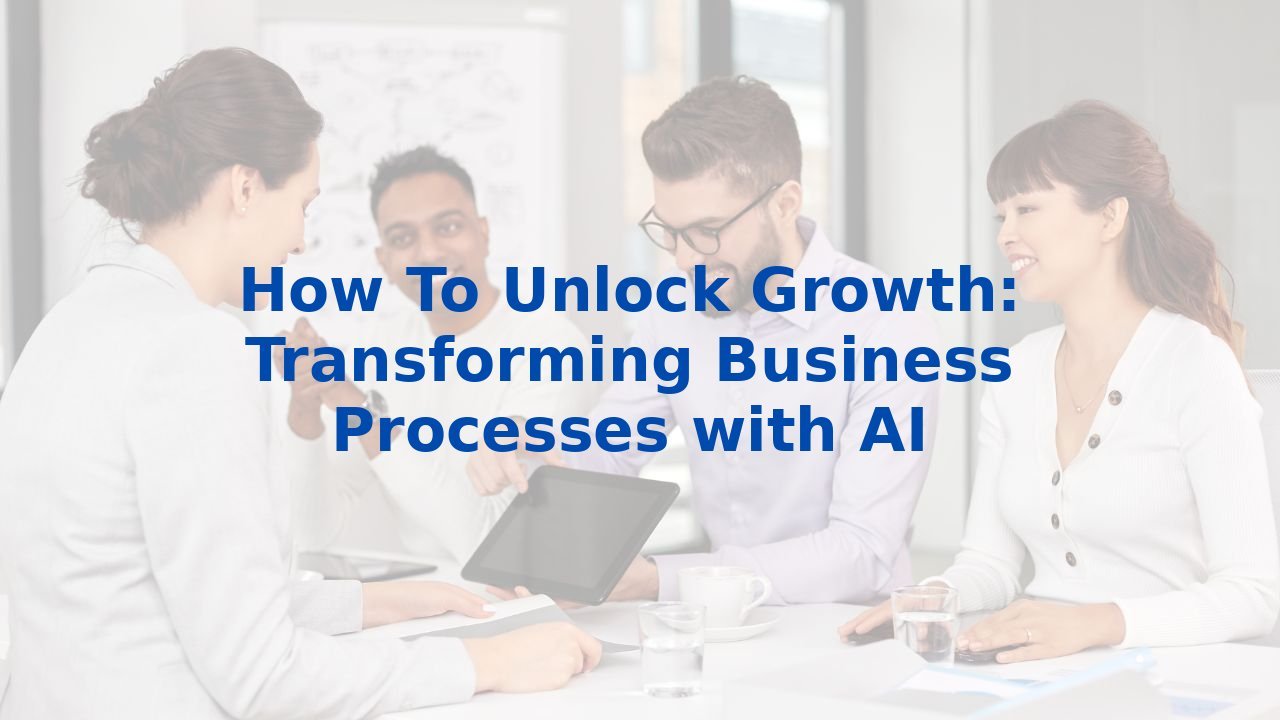How To Unlock Growth: Transforming Business Processes with AI
Unlocking Growth: The Transformative Impact of AI on Business Processes
In the intricate tapestry of modern business, successful organizations are constantly seeking innovative methods to enhance their operations. One notable narrative of success comes from the picture of operational excellence pioneered by a methodology referred to as the PICTURED Process. This approach has been pivotal for companies striving for growth, particularly in sectors with evolving demands. But how can artificial intelligence (AI) further amplify the benefits of such processes? Let’s explore.
Understanding the PICTURED Process
The PICTURED Process isn’t merely a framework; it encapsulates a series of methodologies designed for continuous improvement in service delivery and operational efficiency. While specific details may vary, the essence of the process involves a systemic approach to challenges encountered in day-to-day operations. From planning to execution, each phase is aimed at optimizing business performance.
However, there's a compelling opportunity to enhance this process through the integration of AI technology. By its very nature, AI excels in handling large volumes of data, automating repetitive tasks, and providing actionable insights through predictive analysis. What does this mean for organizations looking to refine their existing processes? The transformative potential of AI is immense.
AI and Its Role in Business Process Improvement
1. Automation of Repetitive Tasks: One of the most immediate benefits of AI is its ability to automate mundane tasks. This ensures that teams can dedicate their time to more strategic initiatives rather than being bogged down by routine operations. Processes like data entry, report generation, and performance tracking can be streamlined, allowing employees to focus on innovation.
2. Data Informed Decision-Making: In today's data-driven landscape, having access to real-time analytics is crucial. AI equips businesses with tools to analyze historical trends and forecast future outcomes. By applying AI to the PICTURED Process, organizations can refine their strategies based on empirical evidence rather than guesswork.
3. Enhancing Customer Experience: AI applications, such as chatbots and personalized marketing, streamline customer interactions. By leveraging insights from customer behaviors, businesses can tailor their offerings to better meet client needs. This aligns well with the PICTURED Process, which emphasizes understanding stakeholder requirements throughout every phase.
4. Risk Management: Businesses are often confronted with uncertainties, but AI can help mitigate risks by identifying potential issues before they escalate. Through predictive analytics, organizations can become proactive rather than reactive, thereby enhancing overall resilience and operational stability.
Training Employees for AI: Bridging the Knowledge Gap
Introducing AI into business processes isn't just about technology—it’s also about people. With rapid advancements in AI, the need for employees to adapt is more critical than ever. Investing in training programs empowers employees with the skills necessary to harness AI effectively.
1. Empowerment through Knowledge: Upskilling employees in AI facilitates confidence in using new tools. This knowledge can spark creativity in how existing processes are managed and improved, with staff empowered to contribute ideas based on their understanding of both AI and their expertise in business operations.
2. Collaboration Across Teams: Training fosters an environment where different departments can come together. A shared understanding of AI can enhance collaboration—marketing teams can work with IT to create targeted campaigns informed by data analysis, while operations might partner with finance for budgeting based on predictive insights.
3. Future-Proofing the Workforce: As industry demands evolve, so too must the skills of the workforce. By embracing AI training, organizations are not merely reacting to trends; they are proactively shaping the future of their workforce. This adaptability is key to long-term success—not just in streamlining processes but in maintaining relevance in a rapidly changing landscape.
The Bottom Line: Embracing AI for Long-Term Success
When organizations integrate AI into business processes like the PICTURED Process, they not only enhance efficiency but create a culture of continuous improvement. The transformative power of AI extends beyond mere automation; it reshapes the way businesses think, strategize, and operate. Complemented by robust training programs for employees, AI becomes an indispensable ally in navigating the complexities of modern business.
As we step into this new era, it’s essential to shift our mindset about AI from being a tool to an essential partner in our growth story. The question isn’t whether to embrace AI, but rather how effectively we can integrate it to propel our business forward.



